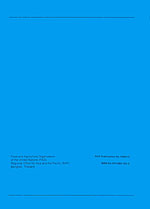A People's Biodiversity Register (PBR) is intended to act as a chronicle or catalogue of the biological resources of Maldives. It represents a depository or store of knowledge and information on these resources.
It is proposed that a separate People's Biodiversity Register should be compiled for each island of the Maldives and updated annually or biannually. Under the overall responsibility and guidance of the Island Committee, young people, men and women, could be employed to prepare these registers. Following appropriate training in interview techniques, data collection and species identification, these young people would be able to conduct interviews with the elders of the islands, and to survey and document the islands' natural resources.
In order to enhance the success of these efforts, island communities should be introduced to the concept and importance of biodiversity registers before field research or interviews commence. Village meetings could be used for this purpose. At the end of the process, all the resource persons contributing to the preparation of island registers should be acknowledged.
A range of techniques could be used to gather information, including island strolls, local resource mapping, user group teams, individual interviews, etc. In order to ensure accuracy, plant and animal samples should be cross-checked by an expert from the MPHRE or MoFA. Separate sheets containing passport data of the plant or animal could be developed. Micro flora and micro fauna could be included wherever possible.
The People's Biodiversity Register should be divided into the following chapters:
Island Profile: An introduction to the island, including its landscape units, resources, population and developmental activities.
secondary users
Age and Gender Dimensions of User Group Activities: For each user group or resource, the age and gender dimensions affecting resource use should be identified.
Knowledge Base of Island: People (men and women) possessing specific knowledge regarding the use of resources available to them, such as artisans, carpenters, boat builders, charmers, medicinal practitioners, farmers etc. should be listed, together with information on ways in which they are using their knowledge to maintain or increase resource diversity on their island.
Biodiversity Wealth: Domesticated and wild plant and animals known to local people should be listed, and information gathered on their local names, uses, seasonality extent or spread, etc. In cases where information is considered secret, sources should be mentioned without specific details.
Terrestrial
Plant Wealth: A checklist of all plants on the island, including a list of the uses of these plants. This list could be subdivided into wild and domesticated plant wealth and should differentiate among plants according to their status, that is common, rare or endangered.
Animal Wealth: A checklist of all animal life on the island, including their habits, behaviour, interaction with island people, etc. should be compiled. Differentiation should be made according to whether animals are common, rare or endangered.
Marine
Animal Wealth: A checklist of all animals found in the island's house lagoon should be compiled, identifying animals harvested for food or trade, in addition to rare, endemic or pest species if existing. Trends in marine animal populations should be included where information is available from fishermen.
Micro-organisms: Inventories of terrestrial and marine micro-organisms should be prepared wherever possible.
Priority Animals and Plants of the Island: Certain categories of animals and plants should be highlighted including those that are harvested in larger than normal quantities, that have relatively small populations, or that are held in high regard by island people. Information on the location and status of these plants and animals should be included.
Development Aspiration: This chapter should list all development projects currently being implemented. It should also identify particular aspirations held by islanders and explore what these developments mean in terms of biological diversity.
Conflicts: Conflicts which exist on the island or with another island should be identified with the assistance of user groups. Gender-related areas of collaboration and/or conflicts in resource management should be described.
Conservation Plan: This plan should include components related to protection, extraction, elimination, trading, monitoring, financing and conflict resolution. For each item, the island should identify a particular area and resource, and subsequently decide who is responsible for monitoring the activity, and how the activity can be carried out to ensure minimal environmental impact.
Threats to Biodiversity: Both human and natural threats to terrestrial and marine ecosystems should be identified. Local perceptions of the cause and mitigation of treats should be understood and recorded.
The information gathered in biodiversity registers should be maintained in the Atoll Office under a Biodiversity Trust for each atoll, and be available to the public. It will be important to ensure transparent access in order to help share the benefits of the resource conservation. All transfers of information and/or materials contained in the biodiversity register should be recorded by the Biodiversity Trust. Certain types of information, such as details on medicinal plants, agricultural plants, seed sources, fish stocks, etc. could be sold to interested individuals for a fee. The source of the original information should always be provided rather than specific details which could be obtained by contacting the relevant islanders.
